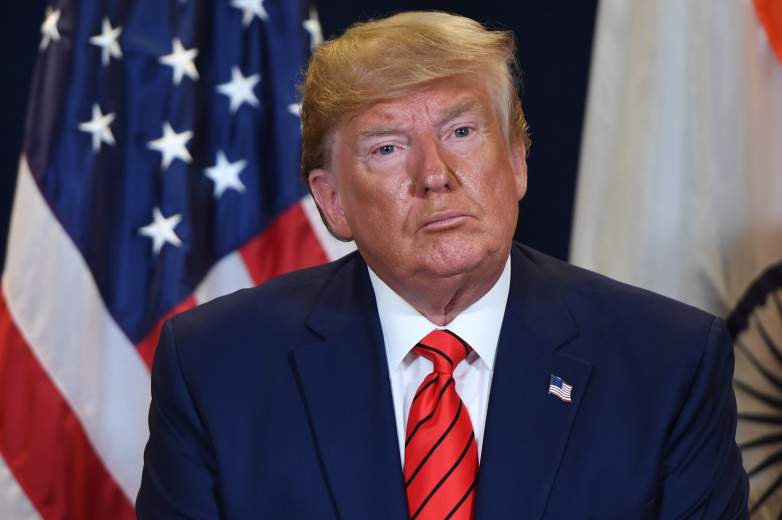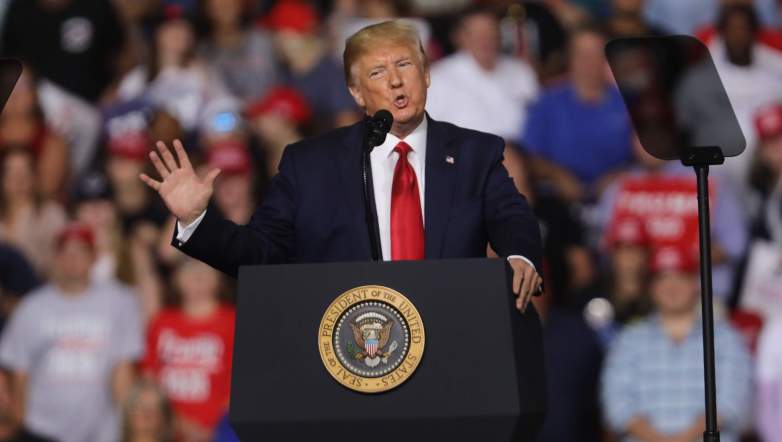
Impeachment isn’t as simple as it might sound. Nancy Pelosi has called for a formal impeachment inquiry against President Donald Trump. But even if the House votes to impeach, Trump won’t be removed from office just yet. That will require another vote that will be much tougher to get. Here are the steps needed to remove a President from office.
Article II Section 4 of the U.S. Constitution says that a President can be removed from office “for, and conviction of, treason, bribery, or other high crimes and misdemeanors.” The high crimes and misdemeanors part is a bit vaguer and often open for debate.
The House Proceeds with an Impeachment Inquiry
The first step is that any member of the House can suggest impeachment proceedings, but only the Speaker of the House, Nancy Pelosi, can decide on proceeding with an inquiry. Up until now, Pelosi had said that an inquiry would be too disruptive to the American people. But on September 24, she announced that she was going to request a formal impeachment inquiry.
At this point, an inquiry is held. The Speaker decides if the inquiry will be handled by the House Judiciary Committee or a special committee, ABC 13 explained. Pelosi has said that the impeachable offenses will be investigated by the six congressional committees that are already investigating Trump. It’s possible that some of these could involve public hearings questioning people connected with the Ukraine situation.
In Bill Clinton’s impeachment proceedings, an independent counsel led the investigation. Because Ken Starr’s investigation was so extensive, the House Judiciary Committee did not conduct its own investigation.
In Richard Nixon’s case, the House Judiciary Committee investigated Nixon and then opened formal impeachment hearings. The first 20 minutes were televised and then the sessions were closed for two months. The hearings were later televised again.
If Pelosi is having the six committees continue their own investigation, then the House Judiciary Committee will later draft articles of impeachment based on those investigations’ findings. The timeline of how long that will take is unclear.
Votes Are Made on the Articles of Impeachment
First, the House Judiciary Committee will have to approve each article of impeachment by a simple majority. In Nixon’s case, the Judiciary Committee passed three of five proposed articles of impeachment.
The articles of impeachment are then voted on by the House of Representatives. Any article that passes by a majority vote (50 percent plus one) would be grounds for impeachment.
In Trump’s case, if all 435 House members vote, they would need 218 votes for a majority to be reached and for Trump to be impeached. There are 235 Democrats in office in the House, one Independent, and 199 Republicans, Reuters explained. This means that it wouldn’t be too difficult to get those impeachment votes simply from Democrats alone.
Sometimes some articles of impeachment get approved and others do not, but even one getting a majority vote would mean the President is officially impeached. The votes can often lead to heated debates in the House.
In Bill Clinton’s case, two articles of impeachment passed by a majority House vote and two articles of impeachment failed. This made Clinton the second President officially impeached, following Andrew Johnson in 1868.
Articles of impeachment were also brought against Richard Nixon, but he resigned before he was impeached.
A Trial Is Held in the Senate
After the articles of impeachment pass by a majority House vote, a trial will be held in the Senate. Members of the House Judiciary Committee often serve as managers, which are essentially the same role as prosecutors. The Chief Justice of the Supreme Court presides over the proceedings.
Trump would have his own counsel.
In Bill Clinton’s trial, he was defended by Cheryl Mills and had seven more on his counsel staff. The managers presented their case over three days and then Clinton’s defense lasted three days. Then for two days, members of the Senate questioned the House managers and Clinton’s defense. The trial also had depositions, had videotaped testimony instead of live witnesses, and closing arguments.
The Senate Votes on Conviction & Removal
After the trial is completed, the Senate will vote on the articles of impeachment that the House passed. The Senate can choose to have public or closed-door deliberations. In Bill Clinton’s trial, they chose closed-door deliberations.
For Clinton, the deliberations lasted three days and the Senate voted. Both charges failed to achieve 2/3 majority in the Senate. Clinton was acquitted.
If 2/3 majority in the Senate is achieved, then Trump would be removed and Mike Pence would be sworn in as President.
In Trump’s case, a total of 67 Senators would need to vote to convict and remove the President. There are 45 Democrat Senators and 53 Republican Senators, plus two Independents who typically vote Democrat. So to reach the 67 total needed to remove Trump, they would need at least 20 Republicans to join with Democrats in voting to remove Trump (plus the two Independents), Reuters reported.
If they can’t get those Republicans’ votes, then Trump would be acquitted and would continue his term.
READ NEXT: Trump Impeachment Polls


